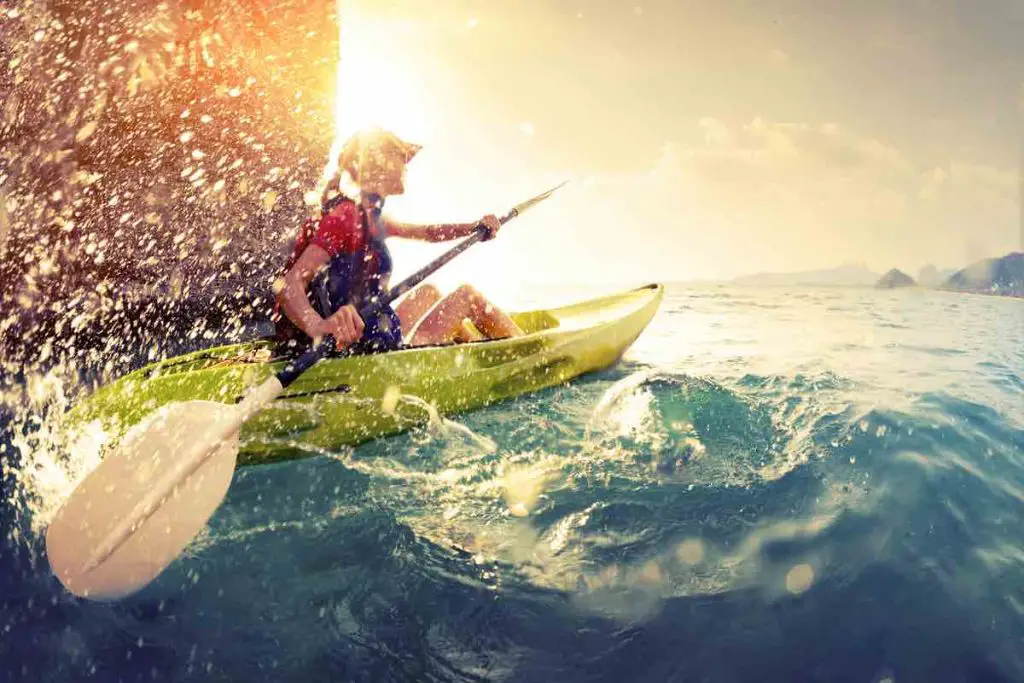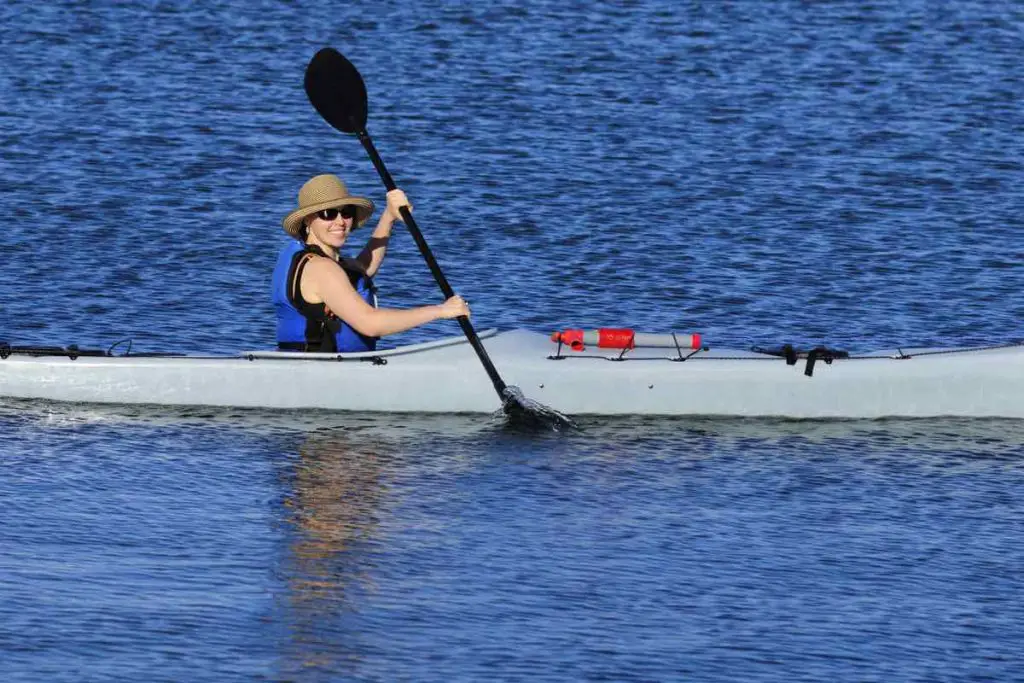Bed extenders are an excellent way to haul more things in your pickup truck without damaging the vehicle. And if you’re someone who loves kayaking, a bed extender should be an essential part of your ensemble. However, strapping a kayak to the extender can be tricky.
You can secure a kayak to a bed extender by first attaching the extender to the back of your truck and tying the support straps around the kayak. Once the boat is safely attached, secure the front of the kayak to your truck bed to evenly distribute the weight.
There are a few things to remember when trying to get your kayak safely attached to a bed extender. This article will teach you more about securing your kayak to the extender before transporting it.

1. Choose a High-Quality Strap
Because your straps are the only things holding your kayak to the extender and bed of your truck, you’ll want to invest in the best straps.
You can use a rope or bungee chord, but to ensure your kayak stays put and isn’t damaged, it’s worth investing in high-quality straps, preferably with latches attached to them for extra safety.
A great option is the NRS Heavy Duty Tie Down Straps (available on Amazon) because they are wide with a heavy-duty latch to hold the strap securely. At 12 feet (3.66 m), these are long enough to wrap around your kayak and extender, and they come in a pack of two, so there’s a backup in case you need extra support.
2. Ensure Your Extender is Properly Installed
Before strapping your kayak, you’ll need to correctly install the extender on the back of your pickup truck. While it’s not difficult, it’s crucial that you get this bit right or you won’t be able to secure your kayak to your truck bed. You may be wondering how to tell if you put the extender on properly. Here are a few things to keep in mind:
- Line the screw up into the proper hole on your truck hitch.
- Make sure you get the pin through the hole.
- Secure the screw on the other side if there is a bolt or latch on the hardware you purchased.
Since you will rely on the extender to keep your kayak safe while driving, it’s always good to double-check and ensure you put it on the right way. If you’re using the Boonedox T-Bone Bed Extender, iFish Fresh N Salty made a great video showing you how to attach it to your truck. Here it is.
Also, ensure that the kayak doesn’t hang out more than 4 feet outside the truck, as it’s the maximum legal limit. I’ve explained this further in my article discussing how far a kayak can safely hang out of a truck. You can check it to learn more about the proper way of transporting kayaks in your vehicle. [How Far Can a Kayak Safely Hang Out of a Truck?]
3. Place the Kayak in the Middle of the Truck
Now that you installed the extender on your truck, it’s time to put the kayak on top. You can lift it with some help or put the kayak’s nose on the extender and slide it onto your truck bed.
Once you have the kayak up on the truck bed and extender, it’s time to check and ensure that it is centered. You will need to line it up a certain way depending on what kind of extender you purchased. But the most important factor here is to have it as close to the middle of the truck and extender as possible.

4. Secure the Straps by Tightening
Now that you have the kayak on your truck, you’ll want to tie it down firmly. Here’s a breakdown of how you can go about this.
Wrap the Straps Around Your Kayak
The best place to wrap around the straps will vary depending on the brand of your kayak. The most effective way to secure a kayak in place is to tie the ropes directly around it. However, that’s not the only area you should focus on.
Here are a few other spots you may want to consider wrapping around:
- If you have any bar near the kayak, it’s ideal to tie the straps to it as this will ensure greater security and prevent it from falling off.
- Some kayaks have holes designed specifically for ropes and these are excellent for added protection.
- You can also wrap around baskets or seats attached to your kayak to help keep it more stable during transport.
Secure the Straps to the Extender
Next, wrap the ropes around the extender once you’ve got them around the kayak. The best way to do this is to use pre-drilled holes or notches so that your straps can’t slip off. Most extenders should have these openings, but you can still wrap it around your extender without them.
Ensure the Straps Don’t Get Slack
Now that the straps are wrapped firmly around your kayak and extender, you need to pull as hard as possible and ensure the ropes are tight. Once you’ve done this, check all parts of the rope to ensure nothing is slack, as this may cause the kayak to bounce around.
The best way to ensure your straps are tight is by tugging on them and walking around your kayak, making sure it looks good on all sides. If there’s enough leftover strap, wrap around the kayak once more for good measure. Doubling up will create a tight connection, keeping your boat safe.
5. Use a Second Strap for the Truck Bed
Once you have the kayak firmly fixed to the extender, you’re almost ready to drive. Most likely, your kayak should be alright, but to ensure it’s not moving around, you should also use a second strap and tie it to your truck.
This video from Headwaters Kayak shows some excellent tips on ensuring your kayak is safely resting in the truck.
It’s vital to ensure that your kayak is also secured to the truck bed to increase stability and balance the weight so it doesn’t slide off your vehicle.
Final Thoughts
Now that you know how to securely attach your kayak to a bed extender, plan a trip and set off on your next kayaking adventure! Keep in mind that you’ll still need a warning flag to avoid tickets and keep the drivers around you safe.
Sources
- Forbes: Best Truck Bed Extenders for 2022
- RM Fishing Kayaks: Best Truck Bed Extenders for Fishing Kayaks in 2022
- YouTube: iFish Fresh N Salty: How to LOAD and STRAP Kayak!!! – On a Short Bed Truck with (Boonedox T-Bone Bed Extender
- YouTube: How to SAFELY Transport a Kayak in Your Truck Bed | Kayaking 101
- WikiHow: How to Tie Down a Kayak